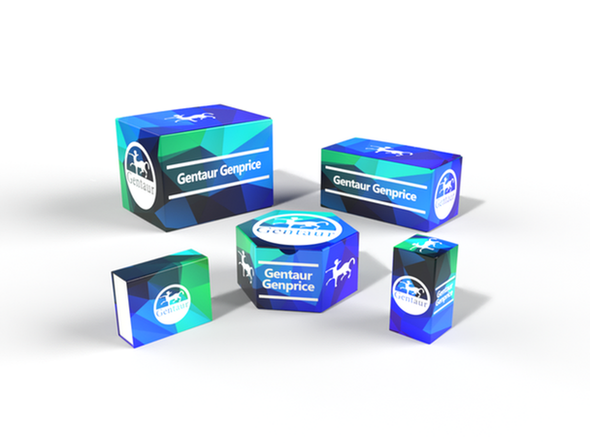Description
PTGER3 Antibody | 28-002 | Gentaur UK, US & Europe Distribution
Host: Rabbit
Reactivity: Human
Homology: N/A
Immunogen: Antibody produced in rabbits immunized with a synthetic peptide corresponding a region of human PTGER3.
Research Area: Membrane, Signal Transduction
Tested Application: E, WB
Application: PTGER3 antibody can be used for detection of PTGER3 by ELISA at 1:62500. PTGER3 antibody can be used for detection of PTGER3 by western blot at 2.4 μg/mL, and HRP conjugated secondary antibody should be diluted 1:50, 000 - 100, 000.
Specificiy: N/A
Positive Control 1: Cat. No. 1205 - Jurkat Cell Lysate
Positive Control 2: Cat. No. 1211 - HepG2 Cell Lysate
Positive Control 3: N/A
Positive Control 4: N/A
Positive Control 5: N/A
Positive Control 6: N/A
Molecular Weight: 43 kDa
Validation: N/A
Isoform: N/A
Purification: Antibody is purified by protein A chromatography method.
Clonality: Polyclonal
Clone: N/A
Isotype: N/A
Conjugate: Unconjugated
Physical State: Liquid
Buffer: Purified antibody supplied in 1x PBS buffer with 0.09% (w/v) sodium azide and 2% sucrose.
Concentration: batch dependent
Storage Condition: For short periods of storage (days) store at 4˚C. For longer periods of storage, store PTGER3 antibody at -20˚C. As with any antibody avoid repeat freeze-thaw cycles.
Alternate Name: PTGER3, EP3, EP3e, EP3-I, EP3-II, EP3-IV, PGE2-R, EP3-III
User Note: Optimal dilutions for each application to be determined by the researcher.
BACKGROUND: PTGER3 is a member of the G-protein coupled receptor family. This protein is one of four receptors identified for prostaglandin E2 (PGE2) . This receptor may have many biological functions, which involve digestion, nervous system, kidney reabsorption, and uterine contraction activities. Studies of the mouse counterpart suggest that this receptor may also mediate adrenocorticotropic hormone response as well as fever generation in response to exogenous and endogenous stimuli.










